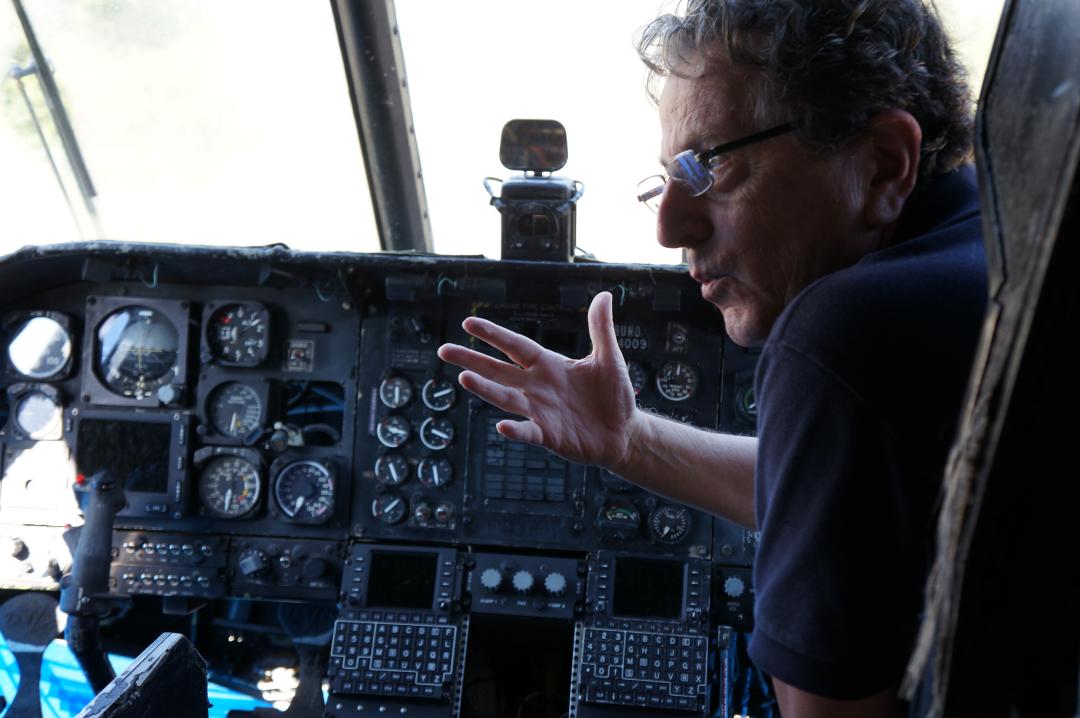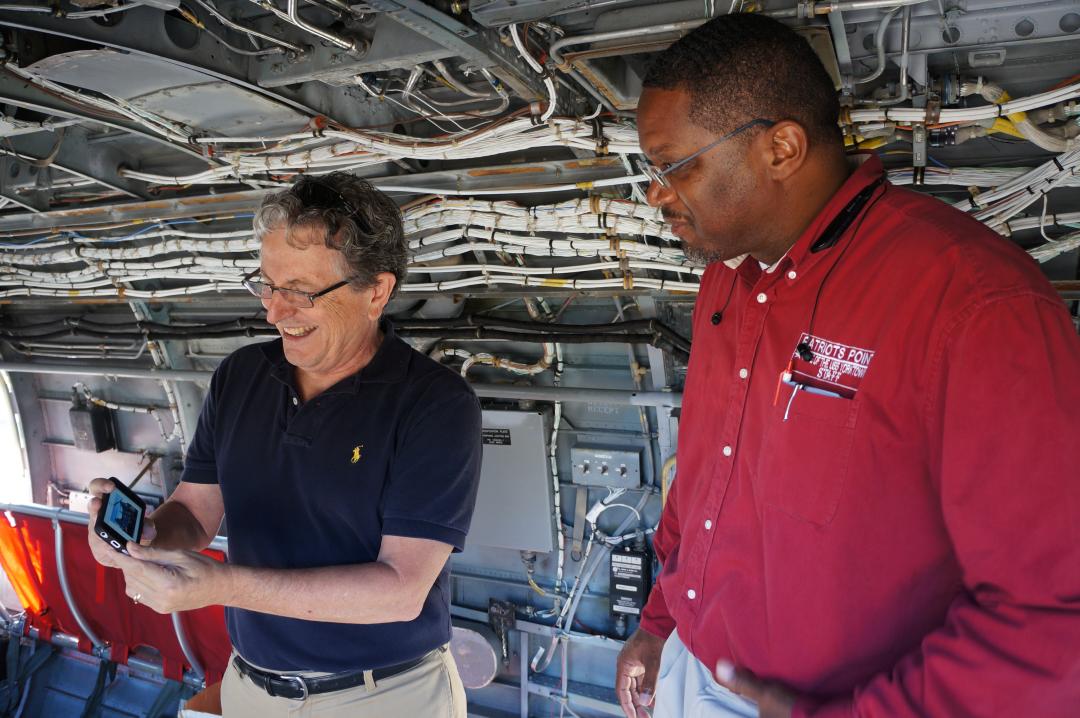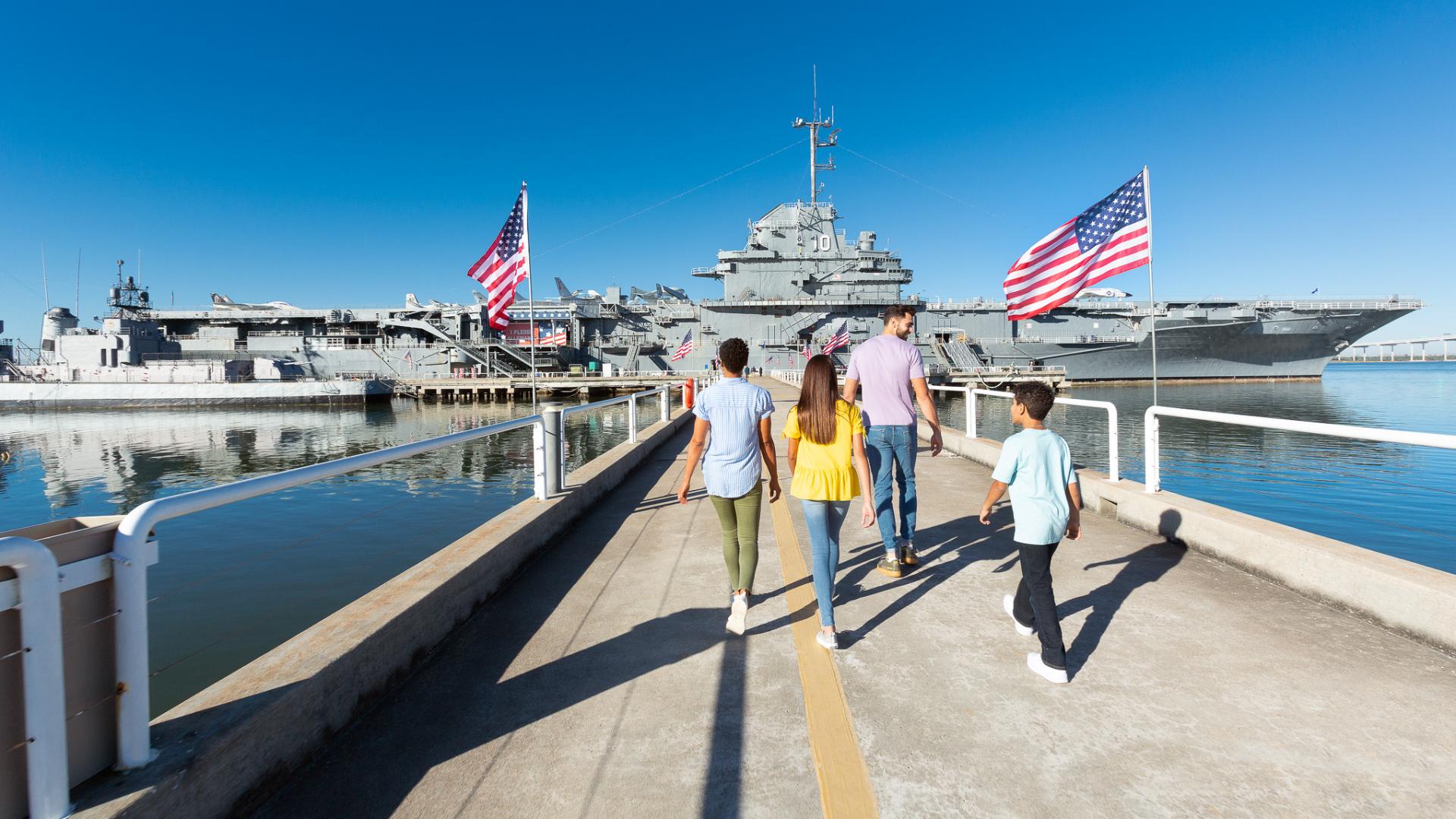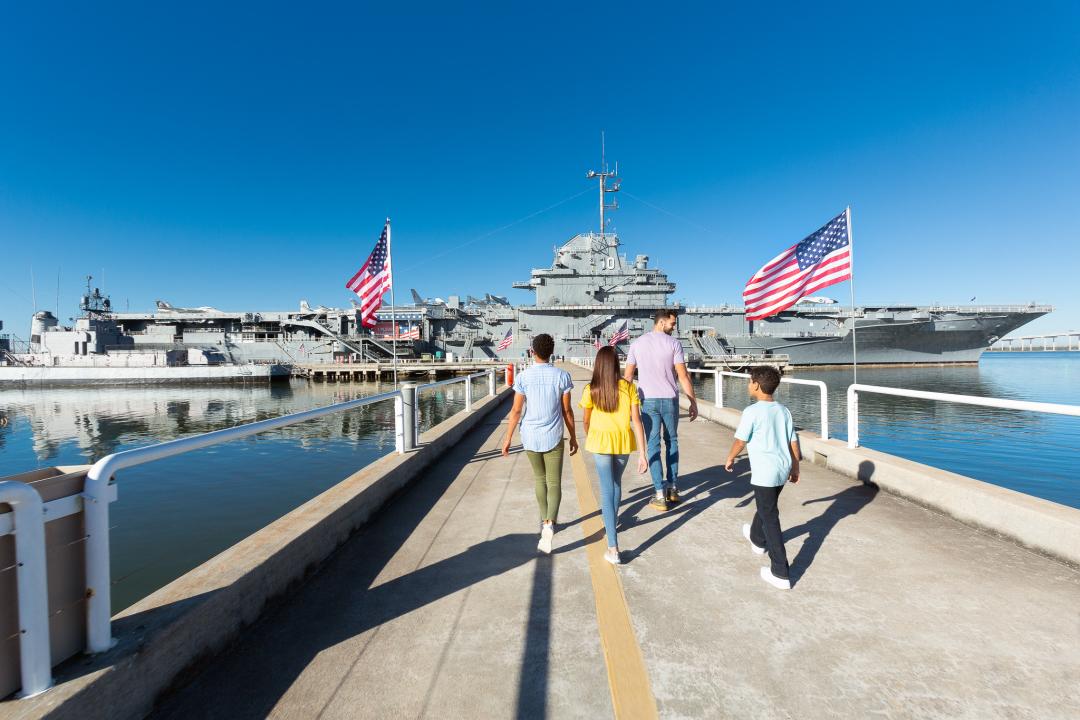
Former CH-46 Sea Knight pilot lends expertise to Vietnam Experience Exhibit
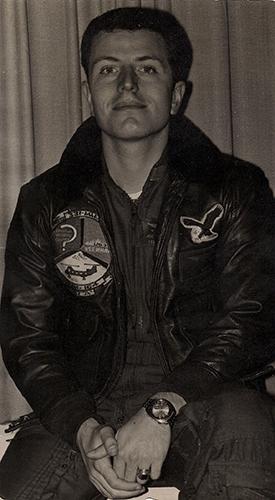
When Joe Caruso joined the Marines in 1968 on an aviation contract, he had never even seen an airplane. Three years later, he was piloting a CH-46 Sea Knight helicopter as part of the last operational squadron in Vietnam, HMM-164. “We were the quick reactionary force pulled in to transport the South Vietnamese forces during the Easter Offensive of 1972,” said Caruso.
Currently a resident of Summerville, SC, Caruso recently heard that Patriots Point Naval & Maritime Museum was creating a Vietnam Experience and that a newly-acquired CH-46 Sea Knight would be featured in the exhibit. He knew he had to be a part of it. He reached out to the museum’s Executive Director Mac Burdette to see if his expertise could be used in the creation of the exhibit and ensuring the authenticity of the CH-46 display. Burdette immediately welcomed him to a planning meeting where he shared a great deal of useful information about his experiences on the CH-46 that can be incorporated into the exhibit.
Then on a warm October day, Caruso came to the Vietnam Experience and stepped into the CH-46 on display. As he sat in the pilot’s seat, all of the buttons and systems came back to him in a flood of memories. “The CH-46 was the workhorse in Vietnam. Hueys were too small, 53’s were too big, but the CH-46 was perfect for troop transport, medevac and re-supply,” said Caruso.
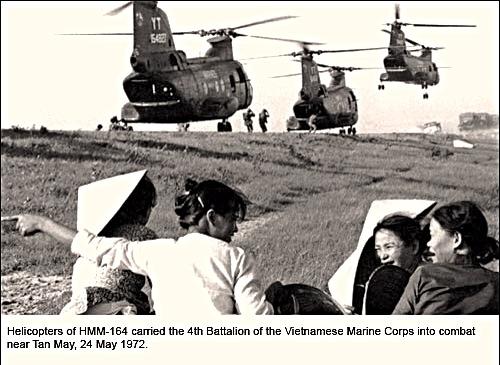
In December 1971, Caruso’s squadron was assigned to the USS Okinawa in WestPac – which mainly operated in the South China Sea. During the spring of the following year, Caruso and his squadron participated in what is now known as the Easter Offensive. All regular Marine ground and air forces had been removed from Vietnam for about a year, “but the military assets that our government had handed over to the South Vietnamese were deemed inoperable, due to lack of proper maintenance procedures,” said Caruso.
His squadron and their sister squadron, HMM-165 (stationed onboard the USS Tripoli), were chosen to help the South Vietnamese forces engage the enemy in the northern provinces. “The Vietnam War was the first helicopter war. The Army used helicopters like the old cavalry had used horses,” Caruso recalled. He didn’t always feel safe when landing in the danger zones in Vietnam. “We were a slow moving, big green target,” said Caruso. In recognition of their support, Caruso’s squadron, HMM-164, was awarded the “Marine Corps Squadron of the Year” honors in 1972.
When Caruso reflects on his service, his thoughts are mixed. “The Vietnam experience, for those of us who lived it, was not a pleasant one, to say the least,” said Caruso. But he has high hopes for the purpose and intent of the Vietnam Experience exhibit opening soon at Patriots Point. He explained, “My hope is that this ‘Vietnam Experience’ will be a starting point for healing, and a place where our nation can truly appreciate those who gave most, if not all, by answering the call to duty. After all, over 58,000 men and women will never have the opportunity to hear, ‘Thank you for your service.’”
Photos below are from one of Joe Caruso's visits to Patriots Point Naval & Maritime Museum in October when he shared information about the CH-46 Sea Knight with museum staff. The helicopter has since been repainted as it looked in Vietnam.
